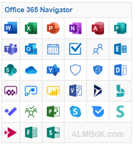Microsoft Teams

 A unified communications platform that combines persistent workplace chat, video meetings, file storage (including collaboration on files), and application integration.
A unified communications platform that combines persistent workplace chat, video meetings, file storage (including collaboration on files), and application integration.
As part of Microsoft 365, Teams delivers an integrated and comprehensive communication, collaboration, and workflow platform.
Microsoft Teams is a chat-centered workspace in Office 365 that helps team members achieve more together. Microsoft Teams serves as a hub for teamwork, providing instant access to chat conversations, content, and tools from across Office 365 into a single workspace. SharePoint and OneNote are built in, and team members can work on Office documents right within the app. Aside from chats, Microsoft Teams also supports video calls and meetings to enable teams to meet live, whether on demand, or scheduled. Team members can easily collaborate with multiple teams and search across people, chats, and files anytime. Microsoft Teams works across Windows, Mac, Web, Android, and iOS platforms.
Teams Development
New Teams
Microsoft Teams has been rebuilt from the ground up to make it faster, simpler, and more flexible than ever before.
- New Teams is 2x faster while consuming 50% less memory.
Microsoft Teams is moving to React and Fluent Design System for improved performance, visual refresh, and improved user experience.
Microsoft's new Teams client is being positioned as the foundation for its future work with Copilot and other AI-powered features. Microsoft Teams has become a very popular productivity software bundle, with more than 280 million people using it every month.
Source: YouTube
Microsoft Teams has made a ground-up investment to optimize the platform to make it twice as fast while using half the system resources. New Teams is a faster, simpler, and more flexible app that uses AI to take the work out of working together.
- Welcome to the new era of Microsoft Teams — microsoft.com
- The new Microsoft Teams - Microsoft Adoption — adoption.microsoft.com
- Introducing the new Microsoft Teams, now in preview — techcommunity.microsoft.com
- Microsoft Teams: Advantages of the new architecture — techcommunity.microsoft.com
Design System vs HTML/CSS
A design system provides several benefits over HTML/CSS for designing and developing a website or application, such as consistency, efficiency, scalability, collaboration, and user experience. It allows designers, developers, and other stakeholders to work from the same foundation, reducing the risk of inconsistencies and ensuring the product meets the intended design goals.
The Fluent UI collection of User Experience (UX) controls enabled us to standardize common components and achieve consistent results across platforms. The use of these responsive, cross-platform styles and controls led to improved responsiveness compared to many of our custom controls and ensured a consistent and cohesive experience across all devices. We are migrating to Fluent v9, which has notable performance benefits with CSS-in-JavaScript. More information on React Fluent UX can be found at https://react.fluentui.dev.
— Microsoft Teams: Advantages of the new architecture — techcommunity.microsoft.com
Angular vs React
React is a lightweight and simple framework that is easy to understand and work with, but does not include as many built-in features as Angular. It is known for its performance and flexibility, and can be used with other libraries and frameworks. It also has a large and active community, and third-party libraries and tools can help extend its functionality and speed up development.
The decision to transition from AngularJS to React was primarily based on performance characteristics and benchmarking results specific to our use cases. This shift and choices with the re-write, has resulted in a smaller more modular codebase, improved support for shareable components, and increased responsiveness. We observed that React has been a better fit for our scenarios and it has been a beneficial move for the application’s overall performance.
— Microsoft Teams: Advantages of the new architecture — techcommunity.microsoft.com
Client Data Layer
One of JavaScript’s core is its single-threaded nature. To overcome this limitation, Microsoft implemented a solution by moving the data management to a separate worker, known as the client data layer. This enabled data fetch, data storage, data compliance operations, push notifications, and offline functionality to run in parallel threads, without adding contention to the main user interface thread. The client data layer is accessed via a GraphQL layer from the main thread, and Inter-Process Communication (IPC) serves as the connection between these layers. By offloading data processing off the main thread, we observed an improvement in the responsiveness of the user experience. Additionally, the segregation of duties has led to cleaner and more optimized code.
— Microsoft Teams: Advantages of the new architecture — techcommunity.microsoft.com
WebView2 vs Electron
WebView2 and Electron are both frameworks for building desktop applications using web technologies, but they have different approaches and benefits. WebView2 offers a smaller size, familiar web technologies, better integration with Windows, faster performance, and better compatibility with modern web standards.
The key benefits observed from the transition from Electron to WebView2 include reduced memory usage and a lowered disk footprint as resources are shared with Edge. Additionally, we have been able to take greater advantage of the native capabilities provided by WebView2 and ensure support for more up-to-date versions of Chromium (latest performance and security updates). WebView2 is available as an SDK for building hybrid cross-platform applications for a more efficient use of resources and better integration with the underlying platform, thus resulting in a more performant and reliable application. This transition has been a positive step towards delivering better user experience.
— Microsoft Teams: Advantages of the new architecture — techcommunity.microsoft.com
Microsoft 365 Adoption
Microsoft Ignite 2021
| Microsoft Teams (o365) | |
|---|---|
| Full Name | Microsoft Teams |
| Short Name | Teams |
| Icon | |
| Description | Unified communications platform that combines persistent workplace chat, video meetings, file storage |
| Blog | https://www.microsoft.com/en-us/microsoft-365/blog/microsoft-teams/ |
| Docs | https://docs.microsoft.com/en-us/microsoftteams/microsoft-teams |
| Roadmap | https://www.microsoft.com/en-us/microsoft-365/roadmap?filters=&searchterms=teams |
| Uservoice | https://microsoftteams.uservoice.com/forums/555103-public |
| Techcommunity | https://techcommunity.microsoft.com/t5/Microsoft-Teams/ct-p/MicrosoftTeams |
- Snippet from Wikipedia: Microsoft Teams
Microsoft Teams is a team collaboration application developed by Microsoft as part of the Microsoft 365 family of products, offering workspace chat and video conferencing, file storage, and integration of proprietary and third-party applications and services.
Teams replaced other Microsoft-operated business messaging and collaboration platforms, including Skype for Business and Microsoft Classroom.
Throughout the COVID-19 pandemic, Teams and softwares such as Zoom, Slack, Google Meet, among others gained much interest as many meetings moved to a virtual environment.
As of January 2023, it had around 280 million monthly users.
Microsoft Ignite 2021 (Spring)
Microsoft Ignite 2020
External links:
Office 365 Articles